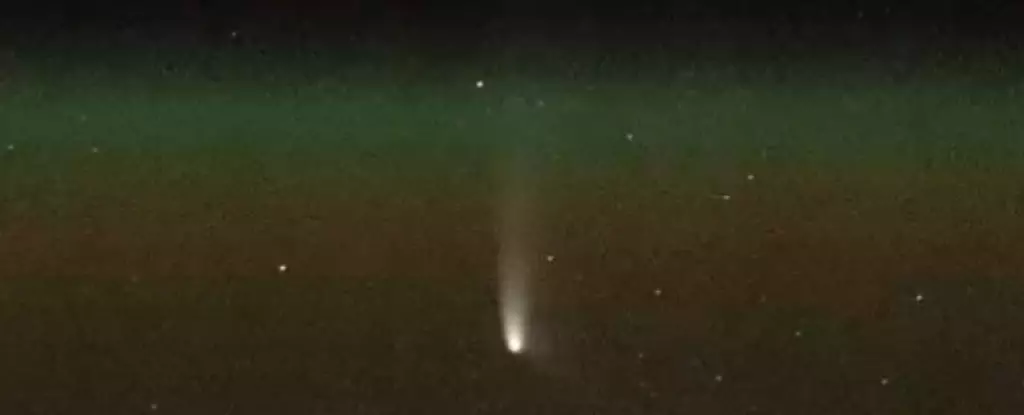In a remarkable turn of astronomical events, January 2023 marked the discovery of a new comet, aptly designated as C/2023 A3 (Tsuchinshan-ATLAS). While the universe frequently reveals new comets, this particular one piqued the interest of astronomers due to its promising potential for brightness. Comet watchers are familiar with the unpredictability inherent in these celestial phenomena. Speculations bubbled up with claims that this comet might be the “comet of the century,” an assertion that highlights both the excitement and the inherent uncertainty in comet observation. As we delve into the details of this comet’s trajectory and potential visibility, we recognize that time has finally arrived to witness its performance.
As of the current date, Comet C/2023 A3 can be sighted with the naked eye, marking a thrilling chapter for astronomy enthusiasts in regions such as Australia and Aotearoa New Zealand. Rising about an hour and a half before dawn, it currently offers a sight akin to a fuzzy star through the naked eye. The real magic, however, can be achieved with the aid of binoculars or a telescope, revealing the comet’s dusty tail trailing behind it as it ventures into the sunlight. While visibility is decent at the moment, the comet is forecasted to become the most splendid comet of 2023 as it edges closer to the sun.
Astronomical events, by their very nature, are transient, and the comet will follow a specific path across the pre-dawn sky. Until approximately September 30, it will maintain a consistent altitude each morning, upon which it will gradually descend toward the horizon until becoming hidden from view by October 6 or 7 due to the increasing glare of dawn. For enthusiasts wishing to catch a glimpse, an eastward gaze is recommended, with specific tools available online to help observers pinpoint the ideal times for viewing according to their geographical location.
As the comet approaches perihelion—the point closest to the Sun—on September 27, it will be approximately 58 million kilometers away from our central star. This close proximity tends to result in a noticeable increase in brightness, and estimations suggest that as the comet swings around the Sun, it will continue to grow more luminous. The ultimate cosmic display will likely occur in the final days of September and spill into early October.
Adding to the anticipation, there lies the potential for an extraordinary event on October 9 and 10 as C/2023 A3 will pass directly between the Earth and the Sun. This alignment could facilitate a phenomenon known as “forward scattering,” amplifying the comet’s brightness due to light being scattered by its dust particles. Should this be the case, observers might be treated to an impressive visual spectacle that might even make the comet momentarily visible during daylight hours. However, caution is paramount; direct observation of the Sun is inadvisable, and only skilled astronomers equipped with proper techniques could attempt such a feat.
Following its celestial dance between the Earth and Sun, Comet C/2023 A3 will transition into a more familiar sight in the evening sky, ascending rapidly in the western horizon post-October 12. For several days, it is expected to still retain the brightness imparted by earlier forward scattering. Nonetheless, as it moves away from the Sun, this effect will gradually diminish.
One of the highlights of observing this comet will be the spectacle of its tail. As the comet travels, its tail—a signature feature—will stretch outward away from Earth, potentially forming a dramatic display in the night sky. Although much of the tail may remain faint and elusive to the naked eye, savvy photographers should harness this opportunity, generating a wealth of stunning images to grace the internet in mid-October.
However, as with all celestial entities, unpredictability looms. The whisper of fragmentation exists with comets that venture this close to the Sun, though no one can precisely forecast such an eventuality. If fragmentation were to occur, it could reveal an intoxicating display of dust and gas that could seize the attention of even the casual observer. Conversely, it is equally plausible the comet may not reach the anticipated brightness levels, which reflects the adage in astronomy—comets are like cats; they often surprise us.
Whether you are a seasoned astronomer or a curious observer, the upcoming weeks promise to deliver an exhilarating journey through the cosmos with Comet C/2023 A3 (Tsuchinshan-ATLAS). With its current trajectory and potential for brightness, it stands as the leading contender for the title of “comet of the year,” capturing our fascination with its unpredictable nature. With such rare opportunities, it is an exciting time to look up at the sky and relish in the beauty of our universe.


Leave a Reply